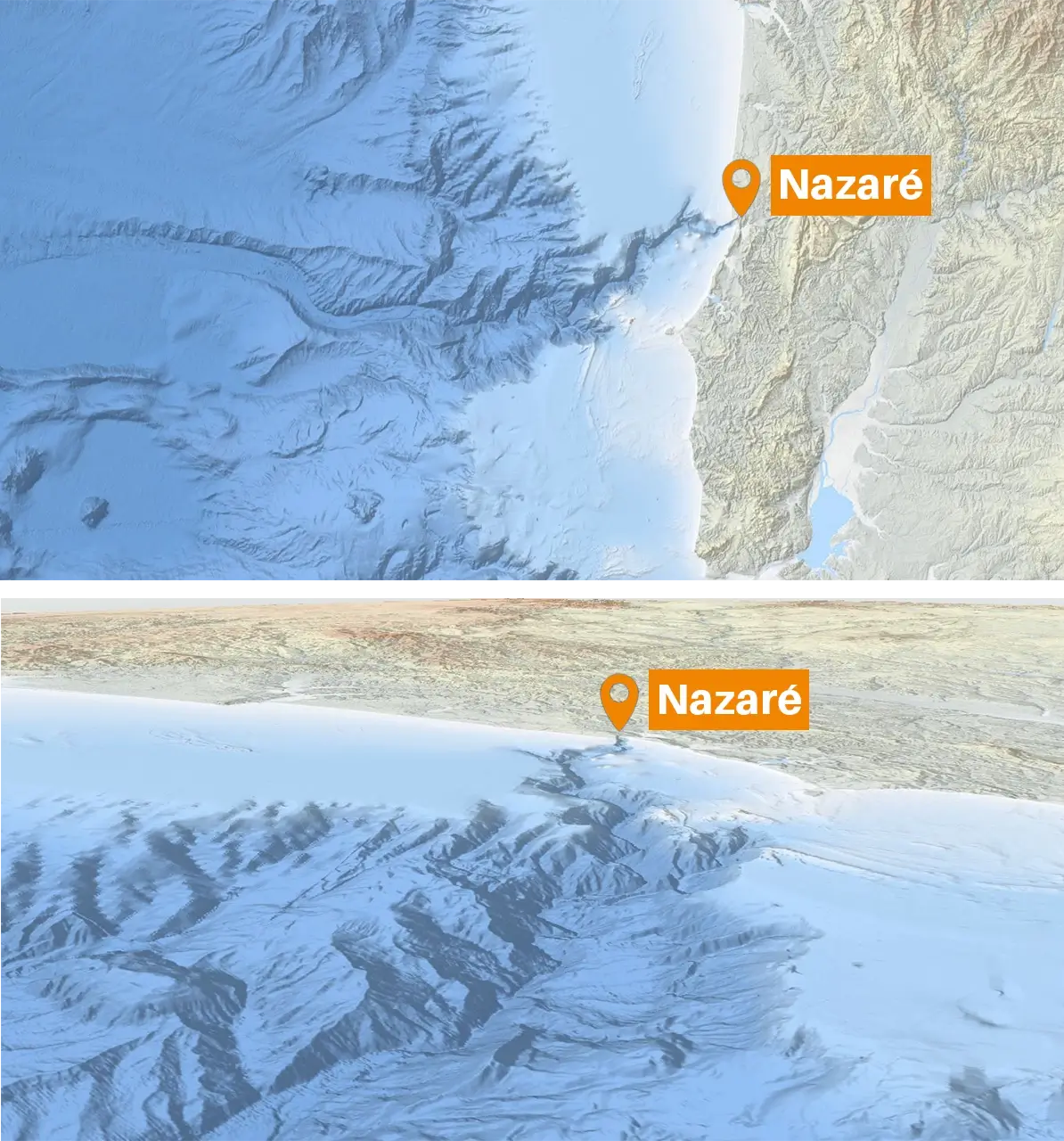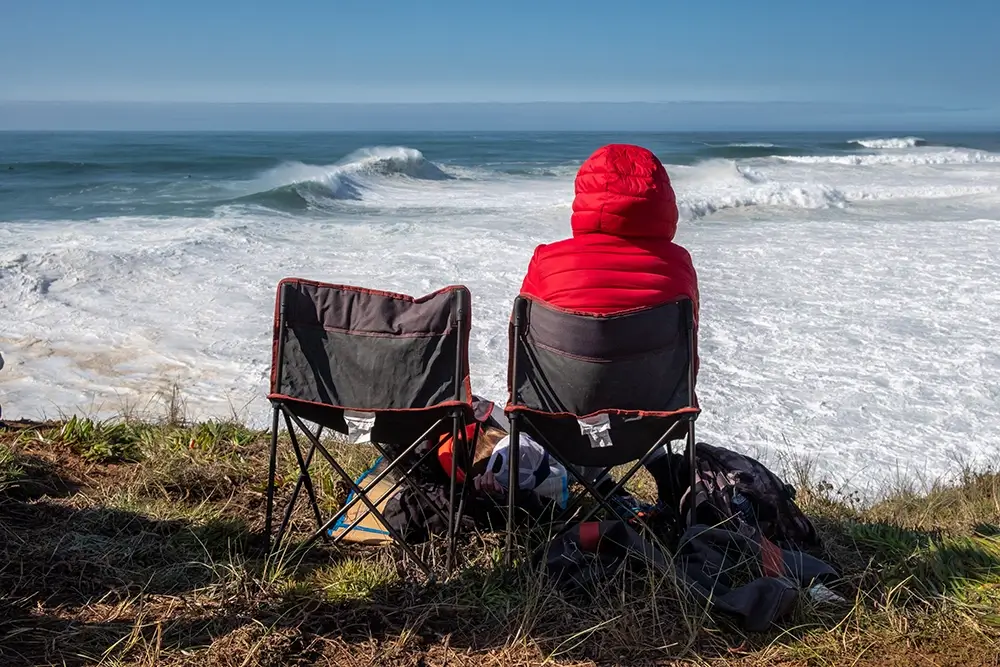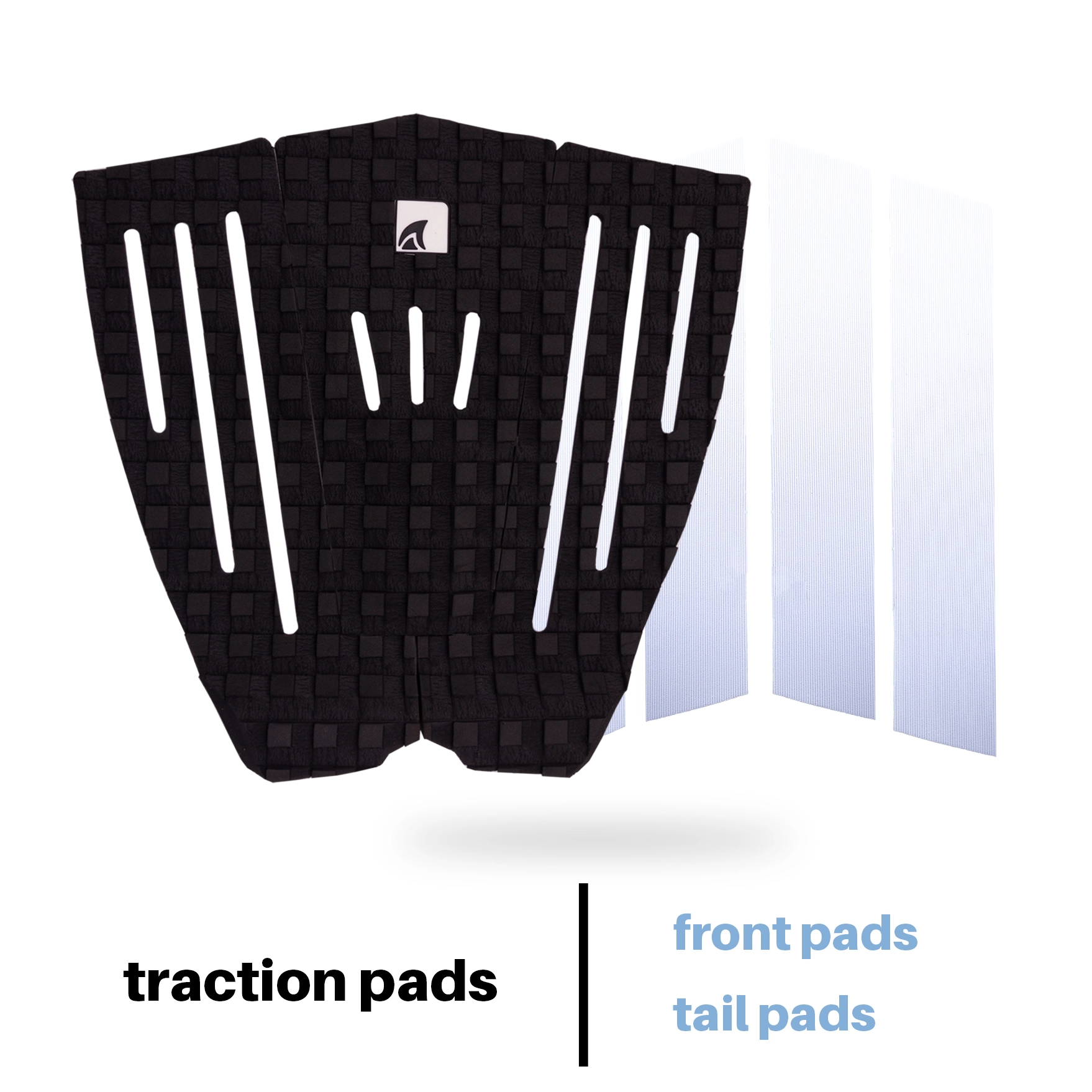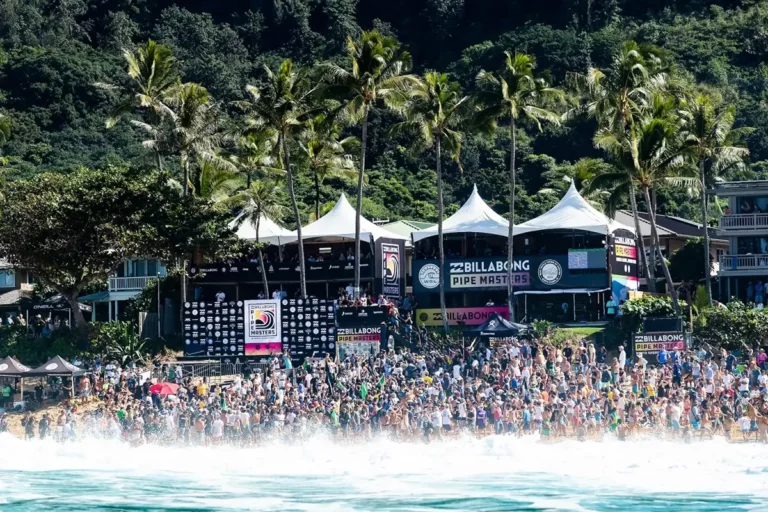Surfing in Nazaré in Portugal has gained worldwide fame for its enormous waves that attract big wave surfers and tourists from all over the world. Interestingly, the place was initially known for its powerful beach break that can tube near the shore before becoming renowned for its big wave surfing. Local fishermen were always aware of the massive waves in front of the Forte de São Miguel Arcanjo, a coastal fort above the cliff, but the big wave surfing community only discovered it in the early 2010s when Praia do Norte was first surfed on monster swells. Then, it took a few more years for it to be recognized not just as a novelty but as a true big wave spot. But how does Nazaré get its 80ft+(24m) waves? Well..
There is an underwater canyon
A true natural wonder
One of the primary factors responsible for the incredible wave size is the Nazaré Canyon, a unique underwater natural wonder that amplifies the power and size of the waves. Stretching approximately 170 kilometers along the coast, the Nazaré Canyon is the largest underwater canyon in Europe, plunging to a depth of 5,000 meters. This geological feature, initially formed 23 million years ago, plays a pivotal role in shaping the colossal waves that grace the shores of Praia do Norte in Nazaré.

The depth of the canyon itself is one of the factors contributing to the immense wave size. The depth allows the waves to travel with increased speed as they approach the shore, without being slowed as much as a wave that needs to climb the shallower water of the continental shelf. In fact, the waves become canalized.
Another crucial element is the difference in depths between the continental shelf and the canyon. As the waves reach the point where the continental shelf transitions into the canyon, there is a rapid depth reduction. This sudden change causes the waves to stand up and gain additional height, further contributing to their impressive size.
Wave amplification also occurs as the waves progress through the canyon and encounter waves originating from the continental shelf that did not take the canyon route. The convergence of these waves creates a peak where they combine, resulting in a substantial increase in size.
The Beach Has A Particular Shape
The dynamic combination of beach and cliffs
The beach at Praia do Norte plays a significant role in the formation of massive waves. It receives pulses of swells from the northern Atlantic in two ways: swells above the continental shelf and swells that take the canyon route. As a result, waves come from a combination of Northwest (Atlantic shelf) and West (Canyon) directions, and everything in between, as they merge. This creates a water trap near the end of Praia do Norte, where the cliff prevents the water from escaping further down. Consequently, the water has no choice but to move in front of the cliff itself, forming a channel. This channel directs the water towards the incoming swell, which collides with the incoming waves, further increasing their already substantial size.

The country is geographically blessed by waves
Portugal’s natural advantage
The geographical location of Nazaré and Portugal plays major role in the abundance of waves experienced in the region. Portugal is positioned at the westernmost edge of continental Europe, making it an ideal area to receive waves generated in the northern Atlantic, particularly during the winter season. Additionally, Portugal benefits from a relatively low offshore geology, resulting in naturally deep waters compared to areas like northern France which. As we have observed it’s synonymous with exceptional wave conditions. In fact, in the world of surfing, Portugal holds a unique status, even hosting an annual professional tour stop. This favorable setting allows the Nazaré Canyon and Praia do Norte to work their magic and amplify the waves to their monstrous size.
In conclusion, the combination of the Nazaré Canyon’s unique underwater topography, the depth of the canyon, the difference in depths between the continental shelf and the canyon, wave amplification through convergence, and the beach’s channeling effect, along with Portugal’s favorable geographic location, all contribute to Nazaré’s ability to generate massive waves.
Is there anything we overlooked or omitted?
If so, please feel free to let us know in the comments section below.
Furthermore, if you require any surfing equipment, we offer a wide range of high-performance and affordable options, including Fins, Traction Pads, and Leashes. We provide worldwide delivery!










Leave a Reply